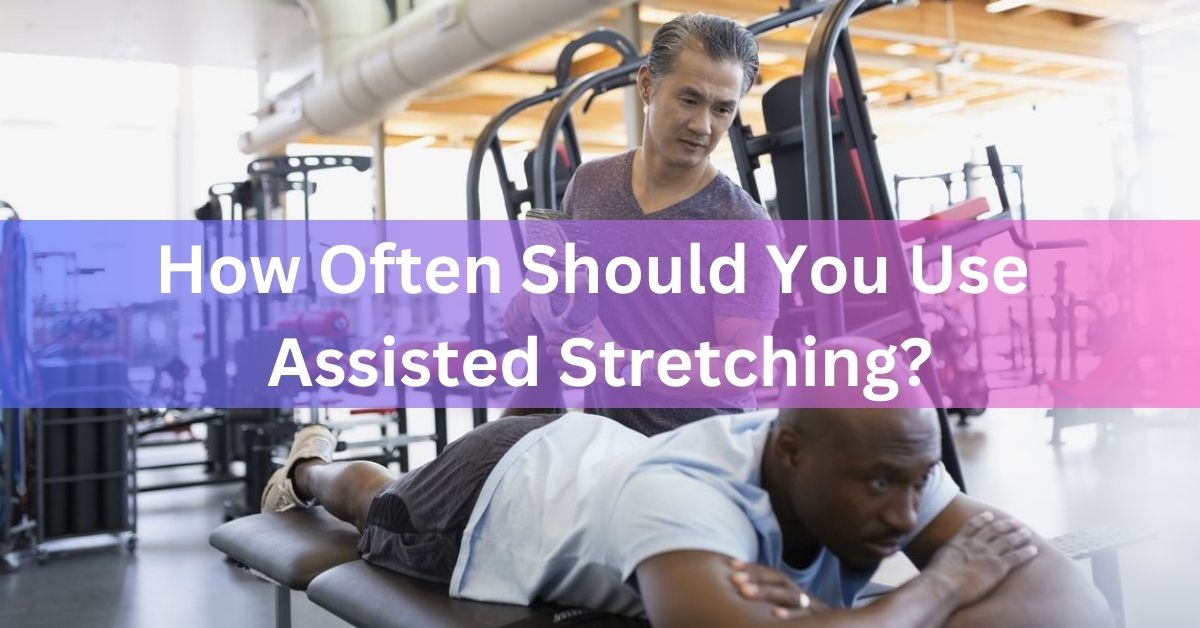How Often Should You Use Assisted Stretching?
Engaging in assisted stretching can transform your body’s mobility and overall wellness. Guided by trained professionals can enhance your flexibility and range of motion while reducing muscle tightness and discomfort.
It uses techniques that target specific muscle groups, increasing blood flow, and oxygen supply to your muscles. Here are factors to consider when determining how often to use guided stretching:
Fitness Level
The current fitness level is a significant factor in determining the frequency of guided stretching sessions. If you are starting your fitness journey or returning after a period of inactivity, more frequent guided sessions may be beneficial.
Beginners tend to have tighter muscles and less flexibility. Regular stretching can help improve the muscle condition. Active people can do guided stretching according to their workout intensity and type.
Age and Health Status
Muscles tend to become tighter with age, and joints may not have the same range of motion as they once did. Regular assisted stretching can help maintain flexibility and mobility in older individuals. People with chronic conditions or injuries may need more guided stretching to improve their range of motion and reduce discomfort.
Personal Goals
Your personal goals can also play a role in determining how often you should use guided stretching. If your goal is to improve overall flexibility and mobility, then more frequent sessions may be necessary.
If you want to address specific muscle groups or reduce discomfort in problem areas, less regular sessions may suffice. Listen to your body and communicate with your stretch coach to determine the frequency that fits you.
Exercise Routine
High-intensity workouts, such as weightlifting or interval training, can cause muscle tightness and strain. Low-impact exercises like walking or yoga require less guided stretching to maintain muscle health.
Incorporating high and low-intensity activities into your routine may require a balance of stretching to prevent injury.
Body’s Response
Not everyone’s body responds the same way to guided stretching. Age, health status, and exercise routine can also affect your body’s response.
It helps your coach when you communicate and tailor the sessions to your needs. Consistency in exercise, along with open communication, can help improve your body’s response to guided stretching.
How Effective Is Assisted Stretching?
Assisted stretching is a highly beneficial practice that dramatically improves physical and mental well-being. It effectively decreases pain and stiffness, helping to alleviate discomfort and enhance body movement.
Individuals can improve their flexibility and range of motion by regularly engaging in guided stretching. This improves overall mobility, boosts athletic performance, and helps prevent injuries.
Guided stretching practice helps with stress reduction. It aids in relaxation and promotes mental health. Stretching exercise offers a comprehensive approach to health and fitness.
Stretching for Optimal Health
The timing of assisted stretching depends on your exercise routine and your body’s response. Fitness level, personal goals, and age can also affect your frequency and range of motion.
Both high and low-intensity activities can benefit from incorporating guided stretching into your routine. It helps improve muscle health, mobility, athletic performance, and mental well-being.
Add guided stretching to your fitness routine to enhance overall health and wellness. Consult a professional coach to develop a personalized plan that meets your needs and goals.





